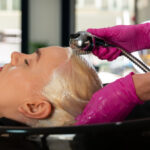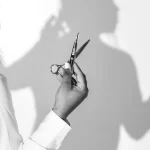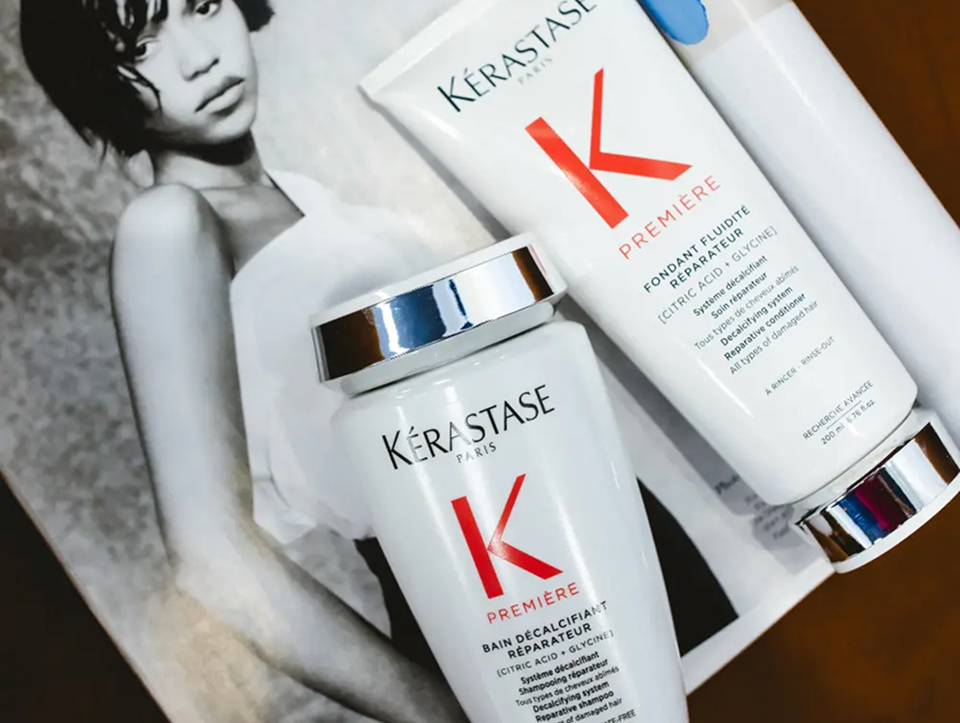Two vital components to have healthy hair are protein and moisture. But which one does your hair need, protein or moisture?
When you have a moisture treatment, you give your hair that extra bounce, while a keratin treatment provides protein to make your hair stronger and more structured.
Still, it would be best to find a balance for your hair to thrive. Knowing where to start will help you determine when you need one or both.
It Starts With Your Hair Structure

Every strand on your head comprises three layers: the cuticle (outer layer), cortex (middle layer), and medulla (innermost layer). The innermost layer is the container that holds your cells and their DNA.
The other two layers are responsible for protein and moisture balance. Still, the cortex, made of protein, makes up a considerable part of the hair shaft. On the inside of the cortex, disulfide bonds hold the protein together to make it strong and resilient.
The bonds give the hair a natural shape, whether straight or curly. To keep the hair texture in its best shape, you need the right amount of protein to hold it together. The outer layer allows moisture in and out.
When the cuticle remains closed or open, it cannot absorb moisture and must be strong enough to retain it. Thus, the ability to seal in hydration keeps hair cuticles healthy.
When Does Your Hair Need Protein?

If your hair lacks sufficient protein, it will lose its structure and strength, appearing limp and weak. Thus, your hair will break easily and feel mushy when wet, yet remain soft. Hence, the hair is lifeless and lacks elasticity.
The Common Causes of a Protein Deficiency
- Coloring, relaxers, and bleaching are chemical treatments that cause a lack of protein.
- The overuse of heat-like styling results in the need for more protein.
- UV rays and chlorinated water are examples of environmental factors that can cause changes.
- Hair care products containing harsh ingredients can lead to a protein deficiency.
- A medical condition resulting from a poor diet can lead to a protein deficiency in the hair.
3 Steps to Test For a Protein Deficiency
There are some simple ways to test if your hair has a protein deficiency:
- While your hair is wet, gather the strands between your forefinger and thumb.
- Now, tug the strands gently away from your head.
- If your hair has some stretch before it breaks, it is healthy; however, if it snaps immediately and is brittle, you lack protein.
When Does Your Hair Need Moisture?

Lack of moisture results when the outer layers are too tightly shut or too widely open. The vents along the cuticle need to open and close quickly. If not, your hair can change in different ways. Hence, your hair will have a rough texture and look dull and lifeless. The hair also tends to get easily tangled and frizzy.
The Common Causes of a Moisture Deficiency
- The lack of moisture can result from overusing heat-styling tools.
- Regular chemical treatments.
- Environmental factors, such as sun exposure and humidity, can lead to a lack of moisture.
- The hair becomes dehydrated, or you have pre-existing health conditions.
3 Steps to Test For a Moisture Deficiency
Your hair’s need to retain moisture is determined by its porosity, which can be classified as medium, low, or high.
- First, take some clean strands of hair and detangle them, dropping them into a glass or bowl of water.
- If you find your hair floats to the top, it means you have low-porosity hair.
- If the hair sinks, it indicates high porosity, a trait that is typically inherited genetically.
How To Balance Protein And Moisture
To maintain healthy hair, it is essential to strike a balance between protein and moisture. Protein strengthens hair, while humidity makes it elastic and soft. Neither is one more important than the other. So, it would be best to balance and follow these tips.
- Incorporate moisture and protein treatments in rotation, such as balancing conditioners with protein and moisture.
- Use moisture-rich products, along with weekly deep conditioning and occasional protein treatments, every three to six weeks.
Suppose you have only one deficiency; address that area only. Still, consider your internal health by eating a balanced diet rich in protein, vitamins, and healthy fats.
Choosing The Right Protein or Moisture Products

Products are available to help with your hair care routine, tailored to your specific needs. Using protein— and moisture-rich products sparingly is helpful, as overuse can be detrimental. So, look for products that comprise:
Protein Ingredients
- Keratin makes up approximately 90% of your hair’s structure, and applying the product helps replenish it.
- To rebuild and strengthen hair, opt for products containing hydrolyzed wheat protein. This fills the weak spots in the cuticle and helps improve moisture.
- Look for products with hydrolyzed silk protein derived from silkworms. This protein binds to the hair keratin and rebuilds the protective barrier.
- Products with amino acids will penetrate the hair shaft to rebuild the damaged protein structure.
- Meanwhile, collagen promotes growth and adds a protective layer around the hair strands.
Moisture Ingredients
- Hyaluronic acid is a naturally occurring compound in the skin that makes an excellent humectant, drawing moisture from the environment into the hair.
- Aloe vera is an excellent natural hydrator. It is approximately 98% water, so it instantly replenishes your hair.
- Glycerin also attracts moisture to bind to your hair in the air.
- Another natural ingredient that helps retain moisture is honey, which has a high sugar content.
When choosing protein and moisture products, select one that addresses your hair porosity level, not just your hair type.
For instance, low-porosity hair can be moisture-deficient and hard to absorb hydration, and you need lightweight moisturizing products.
While highly porous hair is drier and frizzier, requiring denser products like hair oils or leave-in conditioners, hair masks are a great option if your hair is protein-deficient.
Wrap-Up: Protein and Moisture, What Will It Be
Protein and moisture work together to provide elasticity and strength. If you notice signs of protein or moisture deficiency, you can conduct a quick test to assess your hair’s needs before taking action.
Still, it is worth noting that many factors determine what treatments you will need. But you need not stress if you are uncertain about your hair condition.
Allow our stylists at Haste Hair to conduct a personalized hair consultation to recommend the best treatments and products to keep your hair healthy.
FAQ
How do you know your hair needs protein or moisture?
You can test your hair by stretching a dry strand out. If it snaps easily or feels dry, it needs to be moistened. It needs protein to bounce back into shape, but it feels mushy when wet.
Does your hair need both moisture and protein?
Yes, your hair can need both moisture and protein. Moisture helps keep your hair hydrated and flexible, while protein strengthens and repairs its structure. A balanced approach is often best for maintaining healthy hair, as excessive use of either can lead to issues such as breakage or dryness.
When your hair lacks moisture, can it affect the protein?
Yes, when hair lacks moisture, it can affect its protein structure. Hair is composed primarily of a protein called keratin. Without adequate moisture, hair can become dry and brittle, causing the protein bonds that hold it together to weaken. This can lead to increased breakage and damage as the hair loses its elasticity and resilience.
How can I maintain a balance between protein and moisture?
To maintain a protein-moisture balance, drink plenty of water, eat a balanced diet rich in protein and fruits and vegetables, use moisturizers and deep conditioners, avoid overusing protein treatments, and adjust your routine based on the climate and how your skin and hair feel.










